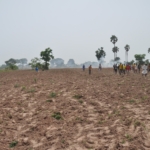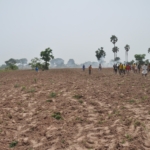
Despite the undeniable signs of climate change accelerating across the globe, the gap in adaptation finance is growing at an alarming rate, reaching between US$194 billion and US$366 billion per year.
This stark revelation comes from the latest edition of The Adaptation Gap Report 2023, issued by the UN Environment Programme, which provides an updated and comprehensive assessment of the costs, needs, and international finance required to address climate adaptation in developing countries.
The core finding of the report highlights the vast disparity between the growing adaptation finance needs and the actual international public adaptation finance flows. The revised figures for adaptation expenses in developing nations are projected to be between $215 billion and $387 billion every year throughout this decade, indicating higher estimates compared to earlier research.

These costs are expected to experience substantial growth by the year 2050. The staggering statistics show that adaptation finance requirements are estimated to be 10 to 18 times higher than current international funding flows, surpassing previous estimates by at least 50%.
In spite of the commitments made during COP26 in Glasgow to double financial support for adaptation to around $40 billion annually by 2025, there was a 15 percent decline in public multilateral and bilateral adaptation finance flows to developing nations, reaching approximately $21 billion in 2021.
According to the report, a recent study highlights that the 55 most climate-vulnerable economies have already incurred loss and damage valued at over $500 billion in the past two decades. These expenses are expected to increase significantly in the coming years, particularly if robust mitigation and adaptation measures are not put in place.
The upcoming loss and damage fund will play a crucial role in mobilizing resources, but challenges persist, as the fund will need to transition to more innovative financing mechanisms to achieve the required scale of investment.

Global Progress on Adaptation Lags Behind
Despite facing an increasing number of extreme weather events like multi-year droughts in East Africa, floods in China and Europe, and heatwaves and wildfires in North America, the report indicates that global progress on adaptation is not accelerating as urgently required. Without substantial changes, the world is poised to experience more climate-related losses and damages.
The Adaptation Gap Report 2023 also draws attention to the issue of loss and damage, particularly in response to the decision made at COP 27 to create a loss and damage fund and funding arrangements for vulnerable developing countries. It underscores the fact that unchecked climate risks will inevitably lead to more climate-related losses and damages, stressing the urgency of addressing the adaptation finance gap.
Global Temperature Rises: The Urgent Need for Action
The report emphasizes that the inadequate action taken to mitigate and adapt to climate change has resulted in global temperatures exceeding 1.1°C above pre-industrial levels. Current commitments, as outlined in the nationally determined contributions (NDCs), are steering the world towards a temperature increase of 2.4°C to 2.6°C by the end of the century. The compounding and cascading nature of climate impacts means that even a fraction of a degree can lead to an acceleration of climate risks.
The Role of International Funding and Inequity in Adaptation Finance
International public climate finance flows to developing countries decreased by 15% in 2021, with adaptation finance suffering from a low disbursement ratio compared to mitigation. The report underlines that doubling adaptation finance by 2025 is crucial, but it alone is unlikely to close the adaptation finance gap entirely.
Gender equality and social inclusion are inadequately incorporated into adaptation finance needs and flows. The report shows that only 20% of national adaptation plans and nationally determined contributions have a dedicated budget for such activities. There is a need for greater transparency and consistency in reporting gender equality markers.
The report identifies seven potential approaches to bridge the adaptation financing gap. These approaches encompass international public adaptation finance, domestic expenditure on adaptation, private-sector finance for adaptation, remittances by migrants, finance tailored to small and medium-sized enterprises, reform of the global financial architecture, and alignment of finance flows with low-carbon and climate-resilient development.
Limits to Adaptation – Action is Needed Now
The report highlights that inadequate action on mitigation and adaptation is translating into soft and hard limits to adaptation, which could result in loss and damage. Resolving the lack of conceptual clarity around loss and damage is imperative for operational progress.
The Adaptation Gap Report 2023 sends a clear and urgent message: immediate, substantial action is needed to bridge the adaptation finance gap and address the mounting climate risks. Failure to do so could lead to more unabated climate impacts and a heightened vulnerability of developing countries to extreme climate events.
The report serves as a wake-up call for nations, international organizations, and global leaders to accelerate adaptation efforts and align financial commitments with climate realities.
Robust Approach to ADAPTATION
The report’s authors propose a robust approach to adaptation, emphasizing its capacity to strengthen resilience, a matter of particular significance for economically disadvantaged nations and marginalized communities, including women.
As an illustration, investing $1 billion in adaptation measures to combat coastal flooding results in a substantial reduction of $14 billion in economic losses. Furthermore, allocating $16 billion annually to agriculture could prevent a staggering 78 million individuals from suffering starvation or chronic hunger as a consequence of climate-related impacts.
The UNEP report highlights strategies for augmenting funding, encompassing domestic budget allocations and financial support from international sources and the private sector.
Other potential approaches involve remittances, amplifying and customizing financial support for Small and Medium Enterprises (SMEs), redirecting financial flows toward environmentally sustainable and climate-resilient development trajectories, and revising the global financial framework.



